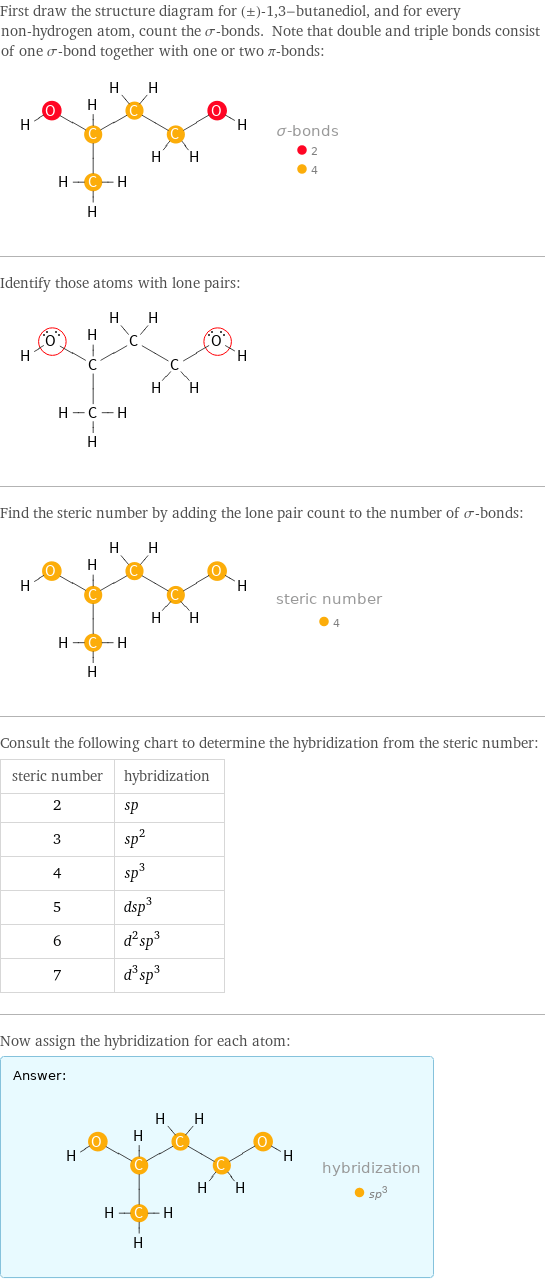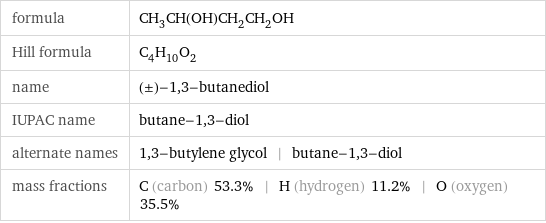Input interpretation

(±)-1, 3-butanediol | orbital hybridization
Result

First draw the structure diagram for (±)-1, 3-butanediol, and for every non-hydrogen atom, count the σ-bonds. Note that double and triple bonds consist of one σ-bond together with one or two π-bonds: Identify those atoms with lone pairs: Find the steric number by adding the lone pair count to the number of σ-bonds: Consult the following chart to determine the hybridization from the steric number: steric number | hybridization 2 | sp 3 | sp^2 4 | sp^3 5 | dsp^3 6 | d^2sp^3 7 | d^3sp^3 Now assign the hybridization for each atom: Answer: | |
Chemical names and formulas

formula | CH_3CH(OH)CH_2CH_2OH Hill formula | C_4H_10O_2 name | (±)-1, 3-butanediol IUPAC name | butane-1, 3-diol alternate names | 1, 3-butylene glycol | butane-1, 3-diol mass fractions | C (carbon) 53.3% | H (hydrogen) 11.2% | O (oxygen) 35.5%